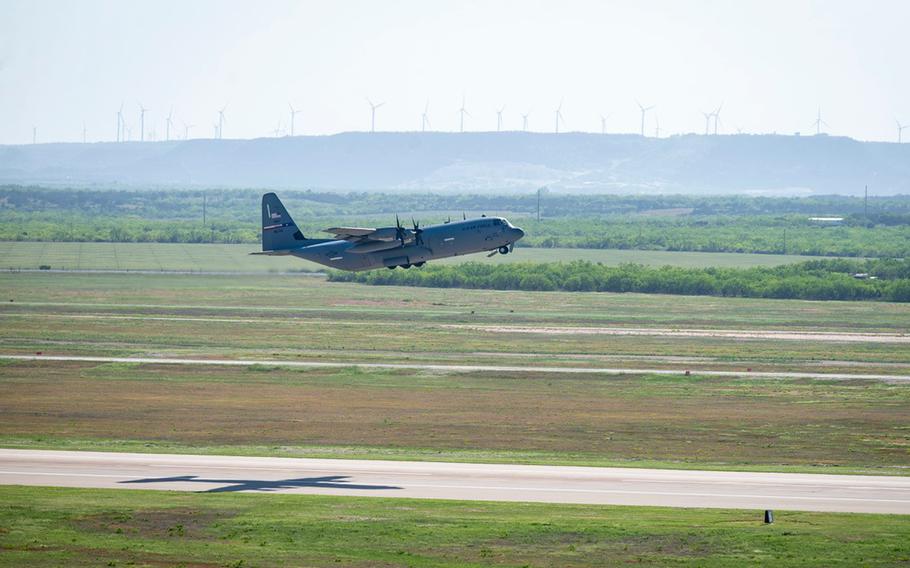
A C-130J Super Hercules with the 40th Airlift Squadron takes off from Dyess Air Force Base, Texas, April 18, 2024, on its way to Andersen Air Force Base, Guam. (Leon Redfern/U.S. Air Force)
An Air Force C-130J Super Hercules from Texas recently set a new endurance standard on a one-stop, daylong flight halfway around the globe to Guam.
The 26-hour, 33-minute flight on April 18 from Dyess Air Force Base, Texas, to Andersen Air Force Base, Guam, with one refueling stop in Hawaii, was a maximum endurance feat that established the Super Hercules as fit for marathon operations, according to a news release from the 7th Bomb Wing.
Designated Hazard Leap, the 317th Airlift Wing mission was the first of its kind in Air Mobility Command history by a C-130J equipped with external fuel tanks, the release said.
The mission was flown by two aircrews with the 40th Airlift Squadron, according to the Air Force.
The squadron’s C-130Js are not equipped for aerial refueling but can carry two external tanks, Tech. Sgt. Dana Cable, a spokeswoman for the 7th Bomb Wing, said by email Wednesday.
The tanks not only allow the Super Hercules to fly farther, they deliver a fuel supply for other aircraft at its destination, Capt. Anna Santori, a Hazard Leap pilot, said in the release.
“The external tanks have new capabilities for us, allowing us to fly farther without refueling,” she said. “It gives us about 17,000 pounds of fuel, which translates to roughly four extra hours of flying.”
The preflight preparation involved careful planning of the flight route, analyzing wind patterns and devising contingency plans for unforeseen circumstances such as thunderstorms or modified flight paths, Santori said.
“Crews began shifting their circadian rhythm 48 hours prior to departure,” 2nd Lt. Cyan Brown, also with the 7th Bomb Wing, said by email Wednesday.
While in the region, the aircraft and crews will participate in the Balikatan exercise in the Philippines, according to the release.
They will focus on deploying forward area and refueling point equipment and flying Marines from Lal-Lo to Batan Island in the Luzon Strait near Taiwan, Brown said.
Batan “is a strategically important island in the northern island chain that USAF mobility aircraft have not been to in over a decade,” she said. “Utilizing our external tanks and ability to land in austere locations, we will be able to provide fuel for follow on missions from USMC aircraft.”
The aircraft will return to Guam without needing to refuel, proving that the C-130J can maneuver between the second and first island chains with a minimal footprint and the need for robust ground services, Brown said. The island chains are successive geographic barriers between China and the Pacific Ocean.